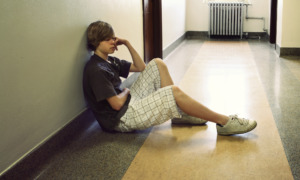With football practices at high schools and youth recreation leagues well underway this month, a new federal government report warns coaches, parents and administrators that the prime season for heat exhaustion is now.
Researchers from the Centers for Disease Control and Prevention, a division of the Department of Health and Human Services, estimated 9,237 heat illnesses among U.S. high school athletes a year – with football players accounting for nearly 71 percent of those incidents, and two-thirds of them happening in August.
Heat illness – defined as dehydration or heat exhaustion/heat stroke resulting from participating in a school-sanctioned practice or game that led to at least one day of missed practice or a game – occurred 4.5 times per 100,000 football players. That’s 10 times higher than the 0.4 per 100,000 rate averaged in the eight other sports surveyed.
The research sampled athletes at 100 high schools from the 2005-2006 through 2008-2009 school years, basing results on the High School Sports-Related Injury Surveillance Study conducted at Nationwide Children’s Hospital in Columbus, Ohio.
Although no deaths were reported in this sample, the report cites an outside study saying that 31 high school football players have died from heat stroke since 1995.
The researchers recommend treating mild cases of heat illness, such as dehydration or heat cramps, by simply removing the athlete from the activity and drinking fluids, while treatment recommendations for more serious symptoms, such as vomiting or headaches, include an immediate evaluation from a health professional.
Sam Mutz, national football commissioner for Pop Warner Little Scholars – which organizes youth football, cheer and dance programs for around 400,000 5-to-16-year-olds nationwide – said preventing heat illness became a key issue for Pop Warner after Korey Stringer, an offensive tackle for the Minnesota Vikings, died of heat stroke in 2001 after a training camp workout.
Mutz said Pop Warner coaches, all of whom are volunteers, are instructed to give athletes water breaks whenever they ask for one. “These are young kids. If they’re telling you they need [water], they need it,” Mutz said.
The CDC published its findings in its latest Morbidity and Mortality Weekly Report.
Free, five pages. Contact: (404) 639-3286, http://www.cdc.gov/mmwr/PDF/wk/mm5932.pdf.
























